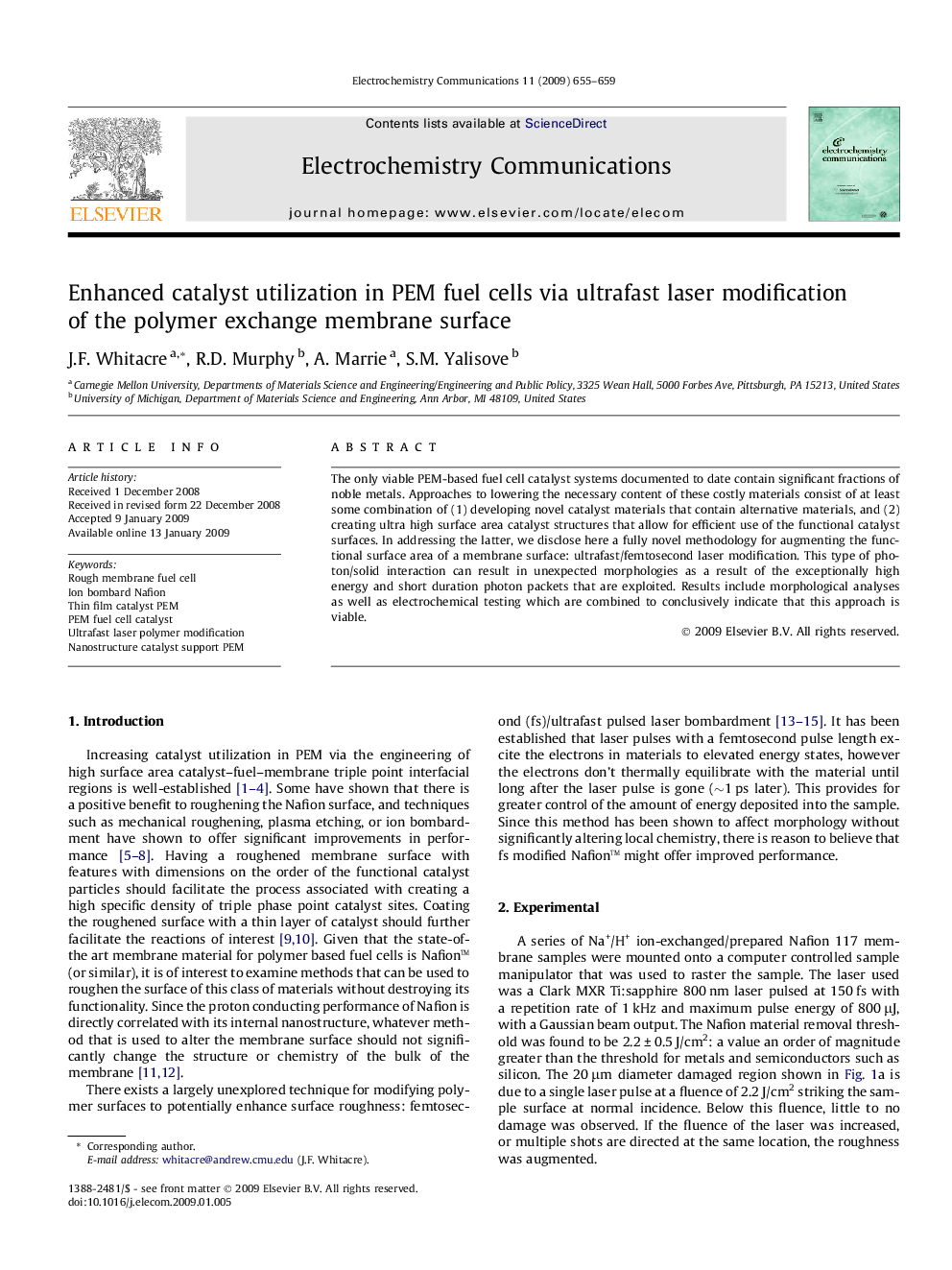| Article ID | Journal | Published Year | Pages | File Type |
|---|---|---|---|---|
| 180895 | Electrochemistry Communications | 2009 | 5 Pages |
The only viable PEM-based fuel cell catalyst systems documented to date contain significant fractions of noble metals. Approaches to lowering the necessary content of these costly materials consist of at least some combination of (1) developing novel catalyst materials that contain alternative materials, and (2) creating ultra high surface area catalyst structures that allow for efficient use of the functional catalyst surfaces. In addressing the latter, we disclose here a fully novel methodology for augmenting the functional surface area of a membrane surface: ultrafast/femtosecond laser modification. This type of photon/solid interaction can result in unexpected morphologies as a result of the exceptionally high energy and short duration photon packets that are exploited. Results include morphological analyses as well as electrochemical testing which are combined to conclusively indicate that this approach is viable.
